Popular games for platform Atari 2600
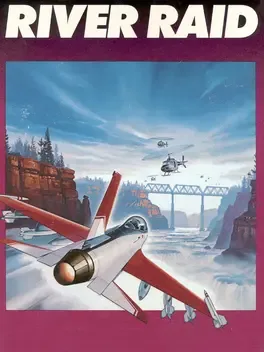
Mission: Code Name River Raid. Jet down the river. Break the enemy blockade and blast the bridges to halt enemy troop advances. Terrain: Code Name River of No Return. An ever-changing, ever-challenging waterway. Expect huge islands, narrow channels and treacherous bays crawling with enemy choppers, tankers and jets. Weaponry: Code Name StratoStrafer. Your B1 StratoWing Assault Jet has been retrofitted with sophisticated, rapid-fire guided missiles. Your craft is super-sensitive to the stick. Accelerate, slow or bank radically with only a touch. Tactics: Jet low to the river to avoid radar. Stop periodically at depots to refuel. A warning claxxon will alert you. Top speed! Best of luck!
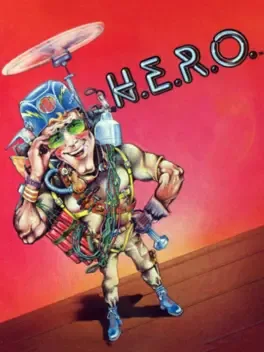
There is trouble in the mines! Volcanic activity has trapped numerous miners, and it is your job to save them. As Roderick Hero, you need to make your way through the dangerous mineshaft avoiding the dangerous creatures and lava, and find out where the miners are located before you run out of energy. To help on your mission, Roderick Hero has several useful types of equipment. A prop pack will allow you to hover and fly around the mineshaft and (hopefully) avoid the many dangers within. Your helmet features a short range microlaser beam which can be used to destroy the bats, spiders, snakes, and other creatures you'll encounter in the mines. From time to time, your path through the mine may be blocked by stone or lava walls. You begin each mission with six sticks of dynamite which can be used to destroy these obstacles (be careful you don't blow yourself up, though!) If you run out of dynamite, your laser beam can also be used to destroy the walls, though this will take longer and use up more energy. As the levels progress, the mine shaft will become longer and more maze-like, creatures will more frequently block the path, and lava walls and pools will appear which are dangerous to the touch.
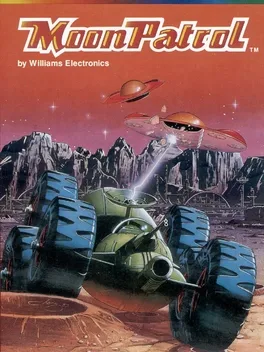
Moon Patrol is a side-scrolling shooter that puts players at the controls of a six-wheeled moon rover that can jump and shoot. The goal is to move through the entire course as quickly as possible while shooting enemies for additional points. Cannons are mounted on the front and top of the vehicle, and both fire simultaneously when the fire button is pressed. Rocks, mines, and pits in the course prevent you from just holding to the right for maximum speed. Rocks and mines can be shot, but pits must be jumped. Some enemies fire shots that create new pits in the course, forcing players to react quickly.
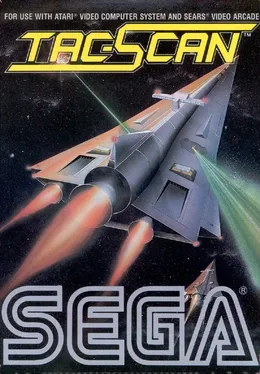
Fly your squadron of five ships around shooting down the enemy pilots. When you get hit, you simply lose one of your ships. After each round, you'll get a replacement ship which you have to maneuver into your formation or it's lost forever. In Tac-Scan, you control which direction you fly, though your planes stay in the same location of the screen.
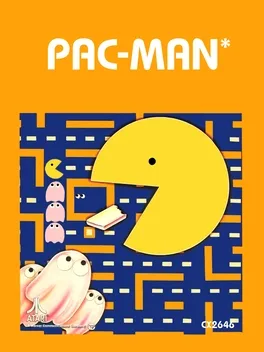
Atari 2600 Port of Pac-Man The player controls Pac-Man through a maze, eating pac-dots (also called pellets). When all pac-dots are eaten, Pac-Man is taken to the next stage. Between some stages one of three intermission animations plays. Four enemies (Blinky, Pinky, Inky and Clyde) roam the maze, trying to catch Pac-Man. If an enemy touches Pac-Man, a life is lost and the Pac-Man itself withers and dies. When all lives have been lost, the game ends. Pac-Man is awarded a single bonus life at 10,000 points by default. Near the corners of the maze are four larger, flashing dots known as power pellets that provide Pac-Man with the temporary ability to eat the enemies. The enemies turn deep blue, reverse direction and usually move more slowly. When an enemy is eaten, its eyes remain and return to the center box where it is regenerated in its normal color. Blue enemies flash white to signal that they are about to become dangerous again and the length of time for which the enemies remain vulnerable varies from one stage to the next, generally becoming shorter as the game progresses. In later stages, the enemies go straight to flashing, bypassing blue, which means that they can only be eaten for a short amount of time, although they still reverse direction when a power pellet is eaten; in even later stages, the ghosts do not become edible (i.e., they do not change color and still make Pacman lose a life on contact), but they still reverse direction.
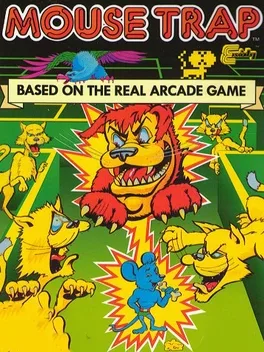
Mouse Trap is a 1981 arcade game released by Exidy, similar to Pac-Man. It was ported to three home systems by Coleco; Coleco's ColecoVision, Mattel's Intellivision, and the Atari 2600.
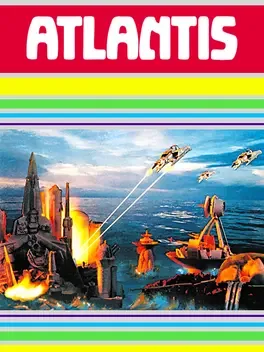
The lost city of Atlantis is under attack! Wave after wave of Gorgon vessels are approaching, each armed with weapons capable of destroying a part of the city. You are in charge of the command posts at the edges of the city and need to defend it from the invaders. The various gorgon craft will keep flying by on the screen in varying numbers and in different flight patterns. At first they fly high in the sky but then progressively lower. If an enemy makes it low enough before you destroy it, it will use it's weapons and destroy one of the buildings in Atlantis. As you progress in the game, the enemy craft will keep increasing in speed. The game ends when all remaining buildings in the city have been destroyed.
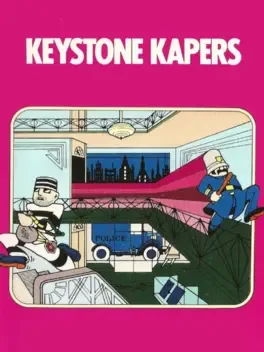
Flash! Harry Hooligan, notorious con-artist, thief and all around-not-a-nice-person, has escaped!! He is now at large and in the vicinity of Southwick‘s Emporium. At this moment, Hooligan is failing every attempt to end his felonious freedom. On the scene is Keystone Kelly, the pride of the men in blue. Officer Kelly, what’s it like in there?” Oh, ‘tis o cryin' shame! Shenanigans like yo wouldn‘t believe! Dastardly deeds that defy description! That rogue is hurlin' everything in reach! Shopping carts, biplanes, beachballs- everything but cathedral radios. LOOK OUT! It's a cathedral radiol! Gotta go! I mean to recover the loot and bust that brute!" Will that double-dyed hoodlum keep Keystone in triple trouble, or will YOU help the greatest gumshoe going catch that no good galoot?? Grab your billyclubs and joysticks! lt's curtains now, Hooligan!"
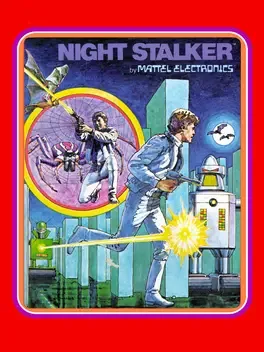
Night Stalker (released as "Dark Cavern" on Atari 2600) is a top-down maze shooter designed by Steve Montero and released for the Intellivision console in 1982. Night Stalker was ported to the Atari 2600 as Dark Cavern and released under Mattel's M Network label. Apple II and IBM PC versions were published in 1983. Robots, bats, and spiders chase you around a maze in Night Stalker, which boasts similar gameplay, if some what slower, to the arcade smash Berzerk. Players must pick up a gun that is randomly placed in the maze. The gun provides the player with a certain number of shots. Once depleted, the gun is again placed in a random part of the maze.

Adventure is a video game for the Atari 2600 video game console, released in 1980. In the game, the player controls a square avatar whose quest is to hunt an open world environment for a magical chalice, returning it to the golden castle. The game world is populated by roaming enemies: dragons, which can eat the avatar; and a bat, which randomly steals and hides items around the game world. Adventure was designed and programmed by Atari employee Warren Robinett, and published by Atari, Inc. At the time, Atari programmers were generally given full control on the creative direction and development cycle for their games, and this required them to plan for their next game as they neared completion of their current one to stay productive. Robinett submitted the source code for Adventure to Atari management in June 1979 and soon left Atari. Atari released the game in early 1980.
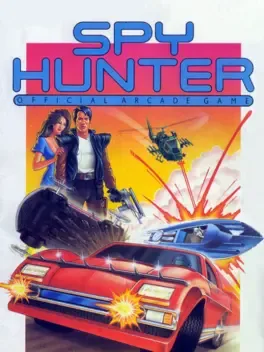
Originating in the arcades, Spy Hunter is a driving action game played from an overhead point of view. Your car is equipped with machine guns to help you get past the numerous enemies out on the road (be careful not to shoot any civilians, though!) Occasionally you will come across a weapons van, and if you drive into the back of the van your car becomes equipped with a second weapon (such as smoke screen, oil slick, or missiles). At several points the road splits and you can enter a boathouse which transforms your car into a boat temporarily. If you drive far enough the seasons change as well (watch out for icy conditions during winter!). The enemy cars will do anything to stop you, including running you off the road, firing guns from the back of a limo, or dropping bombs from a helicopter.

A mystical journey through worlds that changed the concept of an adventure game. Lose yourself in fantastic virtual exploration, blurring the line between fantasy and reality, challenging your wits, instincts, and powers of observation like never before. The fantasy beckons... can you resist its call?
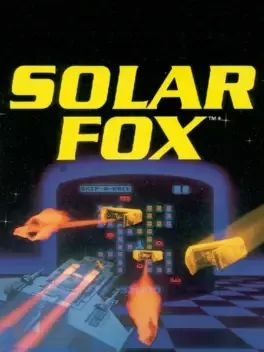
Run over or shoot "Fuzors" while ships on each of the four sides of the screen travel back and forth or up and down trying to shoot you.
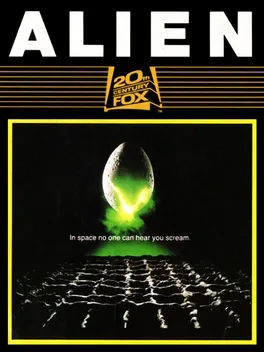
Fox Video Games made the first leap into licensing the Alien property for video games with what was essentially a Pac-Man clone skinned with elements from the 1979 film. Players controlled a human collecting Alien eggs (dots) and small planet and spaceship symbols (fruits) in a maze abroad the USCSS Nostromo while avoiding Alien drones (ghosts). Drones could be killed by shooting them with a flamethrower or collecting symbols that would stun them (flashing dots).
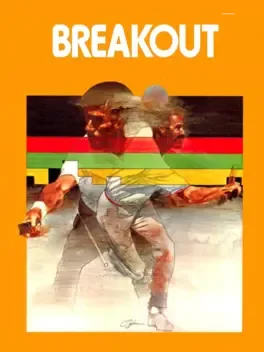
The objective of the game is to destroy a multilayered wall of bricks at the top the screen. Upon hitting the bricks with a ball which bounces off of a paddle at the bottom of the screen the bricks are destroyed. If the player misses the ball with his horizontally moveable paddle the ball is lost. After loosing five balls the game is over.
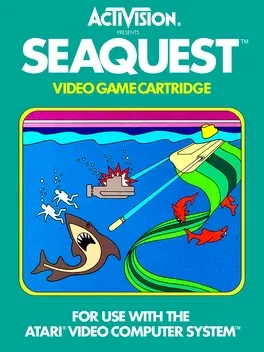
Your divers have collected treasure from the ocean floor. On their way back up to surface they are attacked by hostile fish, sharks and enemy submarines. It is, therefore, your task to collect your divers with your own submarine. While doing that you are not totally defenceless since your sub is able to fire bullets. But you have to watch out for your oxygen level which is shown at the bottom of the screen - once it is depleted, you die. So, every now and then you have to surface to replenish your oxygen supply. But you will lose one of the rescued divers if you surface with less than six frogmen onboard. After having rescued six divers, you move on to the next stage. As the game progresses, the then enemies become faster and more numerous.
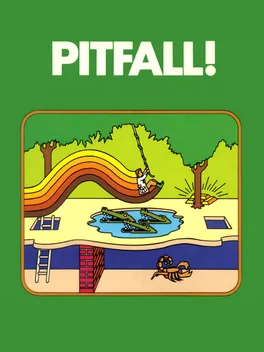
Pitfall! is a video game designed by David Crane for the Atari 2600 and released by Activision in 1982. The player controls Pitfall Harry and is tasked with collecting all the treasures in a jungle within 20 minutes while avoiding obstacles and hazards.
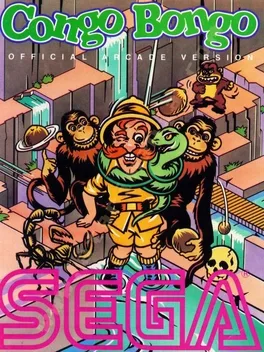
Congo Bongo is an isometric platform arcade game released by Sega in 1983. The game has come to be seen as Sega's answer to the highly successful Donkey Kong game that was released two years prior. The player takes the role of a red-nosed safari hunter who tries to catch an ape named "Bongo". The hunter seeks Bongo to exact revenge for an apparent practical joke in which Bongo set fire to the hunter's tent, giving him a literal "hotfoot". The game was named by Peter W. Gorrie who was the CFO of Sega at that time.
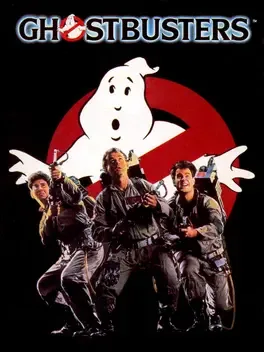
Ghostbusters is an action game that features an overhead-view and a side-view. From Ghostbusters HQ, the player must monitor a map of midtown Manhattan for "ghost alarms", as well as for casual, roaming spirits, and plot a route to the alarmed area. Once the route is plotted, the player then controls the purchased Ghostmobile as it drives through traffic. Here, the player is able to capture casual ghosts on the way if they are en route. When the haunted location is reached, the game switches to a side-view. Two of the Ghostbusters will take position, activate their proton beams, and toss a trap to the ground. The player must then use the two Ghostbusters to attempt to lead the ghost(s) over the placed trap. Once activated, the trap springs to capture any ghosts directly above it. A successful capture will earn the player money, which can then be used to purchase new Ghostbusters vehicles and new modifications for it. An unsuccessful capture will see the ghost fly away (after nastily sliming one of the Ghostbusters).

The Atari 2600 port of the hit arcade Donkey Kong differs from the original version in gameplay and has two stages instead of the original four.
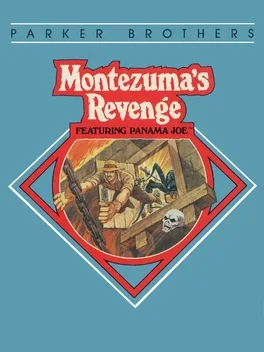
PANAMA JOE, That’s what they call him ‘round these parts; though no one knows his real name or where he comes from. But one thing’s for sure, PANAMA JOE’s a daredevil from the word “go!” No risk’s too great if the reward’s large enough. Winning. That’s what’s the most important to him. And more times than not, that’s exactly what he does. Because he’s tough, clever – resourceful. And sometimes, downright pig-headed! Though occasionally (ah-hum), he’s been known to get in over his head. Luckily, he’s got a knack for getting himself out of hot water as quickly as he gets into it! Let’s hope MONTEZUMA’S REVENGE is one of those times.

Elevator Action is a 1983 arcade game by Taito. It debuted during the "Golden Age of Arcade Games". Innovative in gameplay, the game was very popular for many years. In the game, the player assumes the role of a spy who infiltrates a building filled with elevators. He must collect secret documents from the building and traverse the 30 floors of the building using an increasingly complex series of elevators. The player is pursued by enemy agents who appear from behind closed doors. These agents must be dealt with via force or evasion. Successful completion of a level involves collecting all the secret documents and traversing the building from top to bottom. In the lower floors of the building, the elevator systems are so complex that some puzzle-solving skills are needed. The game was available as a standard upright cabinet The controls consist of a 4-way joystick and two buttons, one for "shoot" and the other for jumping and kicking. The maximum number of players is two, alternating turns. The graphics are extremely simple, 2D color graphics and in-game music was composed by musician Yoshio Imamura. The game was followed by a sequel, Elevator Action II (also known as Elevator Action Returns).
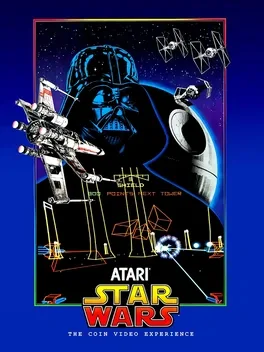
Star Wars is a first-person shoot 'em up based around the original Star Wars film. You take on the role of Luke Skywalker, aiming to destroy the Death Star - which, as any fan knows, involves attacking the 'weak spot' near the exhaust. To even get to this you have to pass swarms of TIE Fighters. Complete the game and it loops back around at ever-increasing difficulty. The game uses vector graphics, which allow lots of action at high speed on comparatively slow systems.
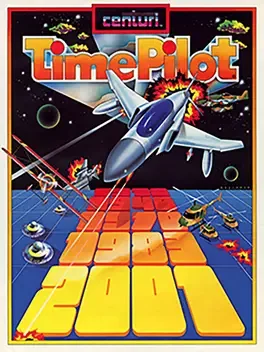
Time Pilot is a multi-directional scrolling shooter and free-roaming aerial combat arcade game designed by Yoshiki Okamoto, released by Konami in 1982, and distributed in the United States by Centuri. Debuting in the golden age of video arcade games, it is a time travel themed game that allowed the player's plane to freely move across open air space that can scroll indefinitely in all directions. The Killer List of Videogames included Time Pilot in its list of top 100 arcade games of all time. The player assumes the role of a pilot of a futuristic fighter jet, trying to rescue fellow pilots trapped in different time eras. The player must fight off hordes of enemy craft and defeat the mother ship (or "boss") present in every level. The background moves in the opposite direction to the player's plane, rather than the other way around; the player's plane always remains in the center.